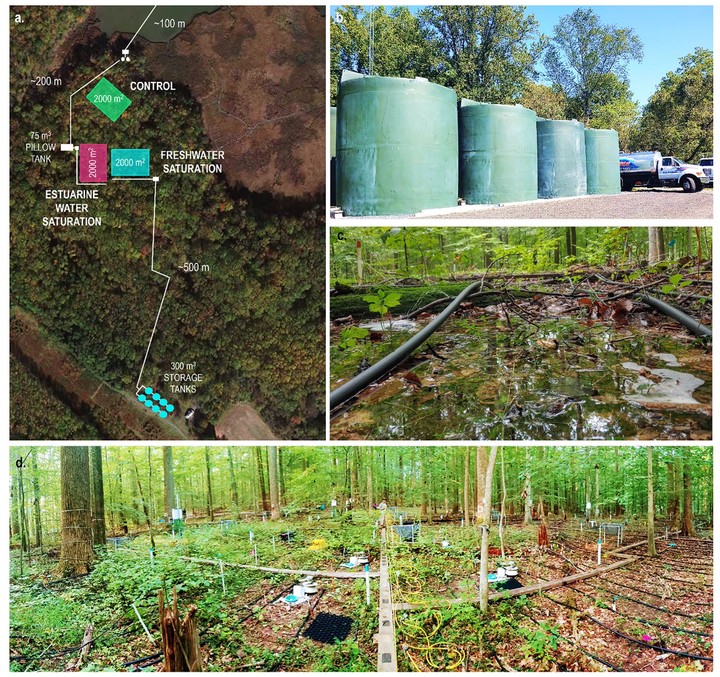Attaining freshwater and estuarine-water soil saturation in an ecosystem-scale coastal flooding experiment

Abstract
Coastal upland forests are facing wide- spread mortality as sea-level rise accelerates and pre- cipitation and storm regimes change. The loss of coastal forests has significant implications for the coastal carbon cycle; yet, predicting mortality likelihood is difficult due to our limited understanding of distur- bance impacts on coastal forests. The manipulative, ecosystem-scale Terrestrial Ecosystem Manipulation to Probe the Effects of Storm Treatments (TEMPEST) experiment addresses the potential for freshwater and estuarine-water disturbance events to alter tree func- tion, species composition, and ecosystem processes in a deciduous coastal forest in MD, USA. The experiment uses a large-unit (2000 m2), un-replicated experimental design, with three 50 m × 40 m plots serving as control, freshwater, and estuarine-water treatments. Transient saturation (5 h) of the entire soil rooting zone (0–30 cm) across a 2000 m2 coastal forest was attained by deliv- ering 300 m3 of water through a spatially distributed irrigation network at a rate just above the soil infiltra- tion rate. Our water delivery approach also elevated the water table (typically ~ 2 m belowground) and achieved extensive, low-level inundation (~ 8 cm standing water). A TEMPEST simulation approximated a 15-cm rainfall event and based on historic records, was of comparable intensity to a 10-year storm for the area. This character- ization was supported by showing that Hurricane Ida’s (~5 cm rainfall) hydrologic impacts were shorter (40% lower duration) and less expansive (80% less coverage) than those generated through experimental manipula- tion. Future work will apply TEMPEST treatments to evaluate coastal forest resilience to changing hydrologic disturbance regimes and identify conditions that initiate ecosystem state transitions.